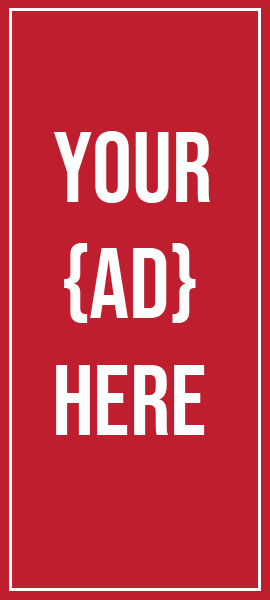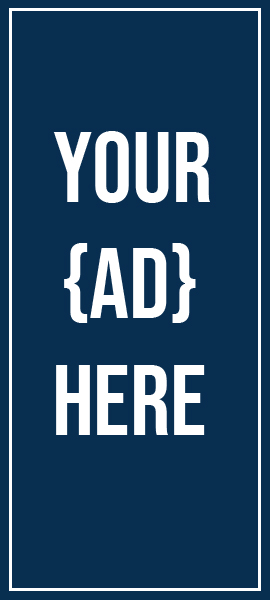
Writing Tips & Techniques for Meeting Agendas
Organizing is what you do before you do something so that when you do it, it’s not all mixed up.
– A. A. Milne
Introduction
Time is a valuable resource in the business world, so you simply cannot allow conversations to meander all over the place. This is the reason why agendas are such an important component in maintaining the focus, organization, and flow of meetings.
The meeting agenda is the agenda that is followed in the meetings, as suggested by the name of the document. Participants in a business meeting will refer to the topics that they will be debating throughout the day as the orders of the day.
In this lesson, we will go over the fundamental structure of agendas, explain how to choose an agenda format, and go over some helpful hints and strategies for composing an agenda.
The Basic Structure
An agenda is a list of the topics for discussion in a meeting, alongside details that can help the meeting run successfully. It keeps the discussion on track and the meeting within schedule. When included in the invitation, an agenda is a way to brief participants on how they should prepare for the meeting and what they should bring.
The basic structure of an agenda includes:
- Date, Time, Location, and Estimated Duration of the Meeting
- Purpose of the Meeting
- Advanced Preparation Guidelines
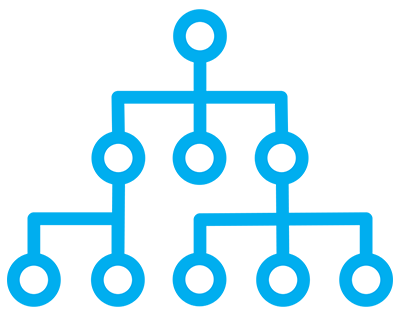
List down what invitees need to review or think about before the meeting so that the discussion can be more targeted and productive. This is also the section to advise attendees on what they need to bring to the meeting. Example: “Please have a copy of the 2005 Financial Report with you.”
- List of Invited (or Confirmed) Attendees
- Items for Discussion
It is recommended that you state items for discussion using results-oriented action words. Example: “Decide on which vendor to award Sunrise account to.” is a better agenda item than “Sunrise Account” or “Talk about Sunrise bidders.”
- Person-in-Charge for each item
- Approximate Time to be spent on each item
Below is a sample template for a meeting agenda:
AGENDA
TITLE OF THE MEETING
ORGANIZATION NAME
Date:
Place:
Estimated Start Time:
Estimated Ending Time:
Purpose of the Meeting:
Invited (or Confirmed) Attendees:
1
2
3
4
5
6
Advanced Preparation Reminders:
Below is an excerpt from a meeting agenda:
AGENDA
MEETING ON IMPROVING EMPLOYEE RETENTION FOR 2010
SMITH SALES AND MARKETING CORPORATION
Date: July 14, 2009
Place: ABC Conference Hall
Estimated Start Time: 04:00 pm
Estimated Ending Time: 05:00 pm
Purpose of the Meeting:
To present the highlights of the ‘Survey on Employee Loyalty and Commitment’ conducted last month.
To draft an action plan based on the results of the survey.
Invited (or Confirmed) Attendees:
1Mark Spencer (MS)
2Louis Walsh (LW)
3Joseph Barlow (JB)
4Victoria Teasdale (VT)
5Mary Beth Cole (MBC)
6Howard Donald (HD)
Advanced Preparation Reminders:
Please review the results of the ‘Survey on Employee Loyalty and Commitment’ sent to you via email last Friday. Also, please come up with suggestions on how we can incorporate insights from the survey into next year’s Employee Retention Program
1. Present the highlights of the survey results.
2. Discuss the implications of the results.
Brief check
It is necessary for the information regarding a standard business meeting agenda to be conveyed to all of the interested stakeholders in advance, prior to the meeting, in order for everyone to have sufficient time to prepare carefully for the upcoming discussions.

Choosing a Format
There are many different formats of a meeting agenda, although very few strays from the basic structure discussed earlier. Word processing software, like Microsoft Word, offers agenda templates and agenda wizards for you to use.
The agenda format to use depends on:
When the attendees are going to view the agenda: Most agendas are distributed days before the meeting (which is recommended). There are cases, however, when an emergency meeting has to be called, and the agenda is sent on the meeting day/ hour itself. If it’s the latter case, write the agenda in outline form; this way it can be easily reviewed in the shortest time.
The context of the meeting: Some meetings happen regularly, for example, a monthly Board of Directors Meeting. In this case, sections on ‘Matters Resolved the Previous Meeting” or “Matters Arising from the Previous Meeting” may be appropriate for the meetings to have a good flow.
Agendas for meetings that happen regularly may not be as detailed as other agendas, as there is the presumption that regular attendees can easily make out what basic outlines and basic tags mean. The attendees’ level of familiarity with the items in the agenda can also dictate how detailed and how formal an agenda should be.
The purpose of the agenda: Your purpose in sending out an agenda can influence what format you should use.
Some agendas are meant as an invitation to potential meeting attendees. In this case, you can include sections on how you perceive their input on the discussion would help.
Some agendas are meant as orientations. For example, The Toastmasters’ Club issue agendas to inform their invitees what would happen at an event. They write the agenda in the second person, e.g. “This is the section where you discuss what happened in the last symposium…”
Writing the Agenda
When writing the agenda, consider the following factors:
- Priority of Items
- Consult everyone involved in the meeting on what topics should be included in the agenda. At least, seek confirmation from your team if the agenda is accurate and complete.
- Rank the topics in descending order of importance and urgency. This way, it’s the less priority topics that get sacrificed in case there’s no more time.
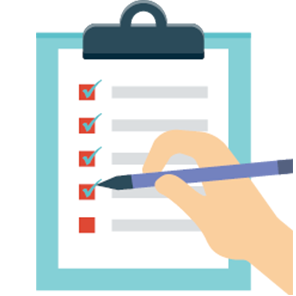
- Logical Flow
- Start with topics arising from the previous meeting before new stuff, unless new issues are more important.
- Combine items that are related and or similar.
- Start with ‘informational items’ first, before items that require critical thinking and decision-making.
- Allot time for questions.
- Close with a wrap-up session.
- Timing
- Plan for only 30 minutes to 1 hour and 30 minutes. Anything longer tends to be unproductive because of attendees’ fatigue.
- Be reasonable in setting the time that will spent on each topic. If the discussion has to be really focused, state in the agenda what precisely would be discussed. You may also advise attendees what they need to prepare beforehand to get the discussion flowing faster.
Create an Efficient Meeting Agenda
As the name suggests, the meeting agenda is the plan for what will be done at the meetings. The things that people talk about at a business meeting are called the “orders of the day.”
All the people who need to know about a standard business meeting’s agenda need to know about it before the meeting so that everyone can prepare well for what will be discussed.
What should be on the list of things to do?
Having a simple agenda makes sure that the discussions go as planned.
The following items belong on a good meeting agenda:
- What the meeting is for
- The date, place, and time of the meeting that was planned
- Things that have been chosen to be talked about
- How much time is given to each subject
- Changes to the things we’ve already talked about
- Review any promises that people made at an earlier meeting
Goal of the Agenda
The point of the meeting agenda is to -
Make sure everyone knows what to expect from the meeting.
A business meeting has an agenda that keeps everyone on track and makes good use of the time.
It doesn't let people talk about something else.
It gives a clear plan of what will happen at the meeting, including the order in which things will happen.
Who will lead each task or conversation?
How long does a person have to talk or say what's on their mind?
The goal of the schedule is to make the meeting as useful and effective as possible.
How to make a good meeting schedule
- Say what the meeting is for. Every meeting has a point because it was called for a certain reason. It’s important to know exactly what you want to get out of the meeting. Find out what you want to talk about so you can stay focused on your goal.
- Ask for input. Talk to the other people at the meeting to get a better idea of what’s going on. Don’t forget that the meeting isn’t about your agenda. Because of this, it’s important that all the important people have a say in what should be discussed.

It will give you a more complete picture of what needs to happen in order for a meeting to go well. If you want to know how to write an effective agenda for the meeting, ask the members for their thoughts and ideas.
Once you have a list, put it in order of importance so that the business meeting can meet all of its needs.
- Write down the questions you’d like to answer. You already know what you want to talk about at your meeting and what its goals are. Now is the time to find the right questions to ask. If you want to know how to make an effective meeting agenda, make a list of the questions you want to talk about. Some simple meeting agendas only list the topic, but that’s not always enough.
You can figure out what the topic is about by writing down the questions that come to mind. This will show that you want to find out more about the topic and are inviting the participants to a discussion so they can also share their thoughts.
- Figure out why each task needs to be done. All of the things that need to be done for the formal meeting should have a point. Make a list of the questions you want to answer to figure out what each task is for. Sharing information, asking for ideas, and making good decisions are all very important because they give the meeting a direction.
- Figure out how long each topic will take. A set of rules and regulations should be in place for how a professional meeting is run. There should be a limit on how long you can talk about a certain subject. If there isn’t, people will talk about it all day and it will be impossible to come to a decision.
There will be a lot to talk about, and one important question is how much time you can give to each topic.
- Choose the people who will lead the discussions. In a meeting, it is important to lead a discussion topic. If you want to know how to write a good agenda for the meeting, start by figuring out who will lead each topic.
Include it in the formal meeting agenda template so that the other people can find out about it. This will make sure that everyone is ready to take care of their responsibilities in the best way possible.
- Do a review at the end of the meeting. If you want to know how to make a good agenda, leave time, in the end, to talk about the meeting. Let everyone take in the meeting and learn from it. The review will help you understand better what was said and what happened in the end.
It’s time to think about whether everything went as planned or if the next meeting needs to be changed. The review will be the first step toward making a good agenda for the next meeting that will happen.
Advantages
An agenda helps a business meeting in the following ways:
One of the best things about an agenda for a formal meeting is that it lets everyone know about the meeting and any important points ahead of time. It will give them a lot of time to get ready for a healthy discussion, so the meeting will be healthy and useful.
An agenda for a business meeting sets the right tone, says what the main goal is, and is often seen as a way to guide the discussions.
The agenda gives the meeting a clear plan and helps everyone stay on track with the topics. It cuts down on side conversations so that people can keep their attention on what’s important and relevant.
The meeting stays on track because of the agenda. If there wasn’t a set time, people would keep talking and the meeting would never end.
An agenda makes the meeting run more smoothly and get more done.
Brief check
Set the topics in order of importance and divide the time accordingly. Make sure the meeting has enough time to cover all of the planned topics. Proper time schedules help people make their comments, in short, simple sentences that will fit into the time allotted. This helps to speed up conversations and keep the meeting on track.
Disadvantages of meeting agenda
Here are some of the problems with a formal agenda:
It doesn’t let the conversation go anywhere, even if the subject is important. When there’s a set amount of time, the leader will end the debate even if all the points haven’t been covered.
A strict agenda for the meeting makes it less likely that people will be spontaneous and creative. Without spontaneity and creativity, the meeting is just like one of the hundreds of others.
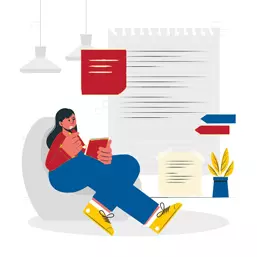
Conclusion
A business meeting is an important place where people have to talk about serious issues. Having a formal meeting agenda helps everyone stay on track and stop wasting time on things that don’t matter at the moment.
Practical Application
Jane was getting ready for an important meeting, and as part of her preparations, she made the decision to prepare an agenda. She wanted to make sure that the purpose of the meeting, what the guests would be expected to bring, and the anticipated end time were all covered in the invitation. She made it a point to ensure that her ideas were not only rational and concise but also actionable so that they would contribute to the flow of the meeting rather than clutter it up with ideas or proposals that were not essential.
In addition to this, she made it a point to allow sufficient time for each topic to be covered in-depth in order to improve the precision of her estimation of the amount of time remaining in the meeting. Because she had made sure that everyone was prepared for the meeting, it went off without a hitch when it finally took place.
